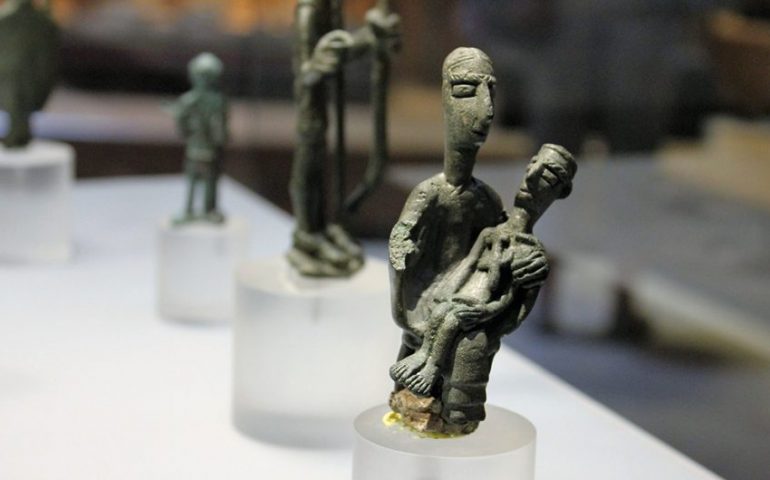Mother Of The Murdered: The Sardinian Piety 0 Comments

In an extensive area of central-eastern Sardinia, rich in splendid mountains with steep walls, deep ravines, caves and caverns, where archaeological research is bringing to light the remains of the island's oldest history, in Sa Domu e S'Orcu of Urzulei, 2 hours drive and 150 km far from the Gabbiano Azzurro Hotel & Suites, the bronze statuette of "The Mother Of The Murdered" was found, which, about three millennia before, seems to contain the embryonic stage of Michelangelo's Pietà (The Piety).
"... on a stool, partly immersed in the mass of lead that fixed it to the base, a small statue of a mother with her son on her lap is sitting..."
"The woman, frontally seated, raises on her bent elbow her right hand in a praying act, and with her left hand, that has precisely marked and distinct fingers, she grasps his left shoulder and supports her son with evidently suffered strain, symbolically by the proportions of the same hand; ... the son is an adult man ... "(Sculpture of the Nuragic Sardinia by Giovanni Lilliu).
If we close our eyes and recall to the mind the Michelangelo’s Pietà, this is the exact specular description of Buonarroti's marvellous work: a compassionate mother with her adult son lovingly embraced in her arms.
It is said that in the early 1900s, a young shepherd named Mulas had found in Sa Domu 'e S'Orcu, on top of the mountain that probably housed a prehistoric centre of bronze craftsmanship, a strange statue, about 10 centimetres high, depicting a woman sitting with a man in her arms.
It had not been difficult to find it by a little digging in the ground. A few years later, in 1930, he handed it to the famous archaeologist Taramelli, who was drafting the archaeological map of the area.
In the small bronze, the son is sitting on his mother's lap and has a dagger and a cap.
There are various readings: some theorist thinks of a mother who is thanking the divinity for the return of the wounded son from war; those who believe that it is a Mother Goddess who embraces the deceased in her arms, and those who suppose that the statuette represents two distinct gods.
Today the statue can be admired at the National Archaeological Museum of Cagliari.
--
Written by Daniela Toti
Teilen Sie uns Ihre Meinung mit!